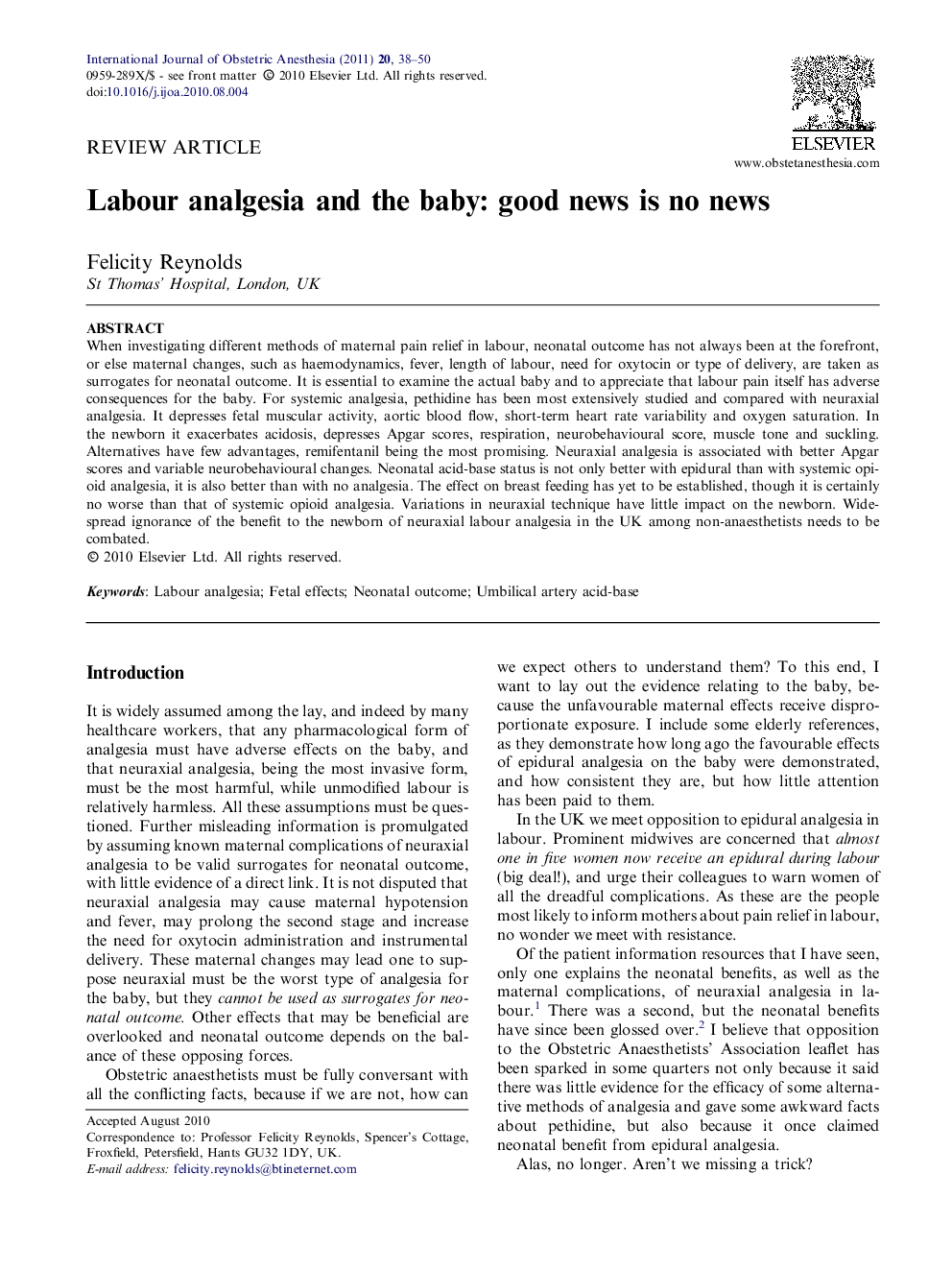| Article ID | Journal | Published Year | Pages | File Type |
|---|---|---|---|---|
| 2758048 | International Journal of Obstetric Anesthesia | 2011 | 13 Pages |
When investigating different methods of maternal pain relief in labour, neonatal outcome has not always been at the forefront, or else maternal changes, such as haemodynamics, fever, length of labour, need for oxytocin or type of delivery, are taken as surrogates for neonatal outcome. It is essential to examine the actual baby and to appreciate that labour pain itself has adverse consequences for the baby. For systemic analgesia, pethidine has been most extensively studied and compared with neuraxial analgesia. It depresses fetal muscular activity, aortic blood flow, short-term heart rate variability and oxygen saturation. In the newborn it exacerbates acidosis, depresses Apgar scores, respiration, neurobehavioural score, muscle tone and suckling. Alternatives have few advantages, remifentanil being the most promising. Neuraxial analgesia is associated with better Apgar scores and variable neurobehavioural changes. Neonatal acid-base status is not only better with epidural than with systemic opioid analgesia, it is also better than with no analgesia. The effect on breast feeding has yet to be established, though it is certainly no worse than that of systemic opioid analgesia. Variations in neuraxial technique have little impact on the newborn. Widespread ignorance of the benefit to the newborn of neuraxial labour analgesia in the UK among non-anaesthetists needs to be combated.
